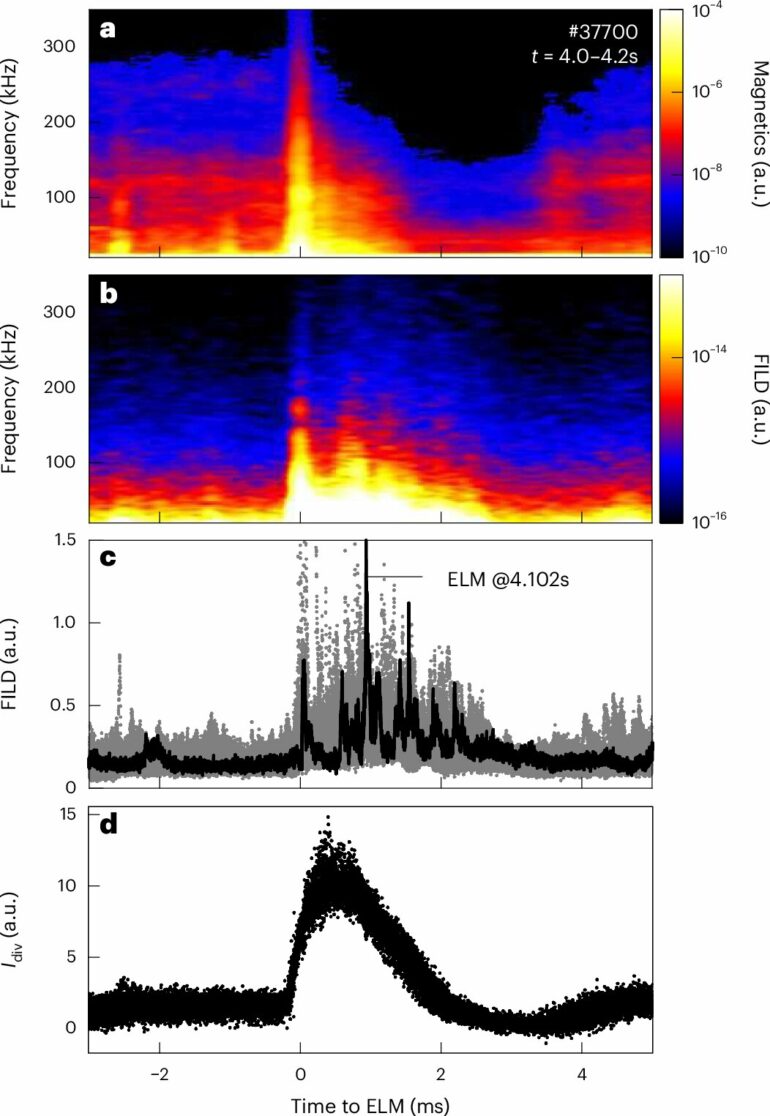The development of sustainable energy sources that can satisfy the world energy demand is one of the most challenging scientific problems. Nuclear fusion, the energy source of stars, is a clean and virtually unlimited energy source that appears as a promising candidate.
The most promising fusion reactor design is based on the tokamak concept, which uses magnetic fields to confine the plasma. Achieving high confinement is key to the development of nuclear fusion power plants and is the final aim of ITER, the largest tokamak in the world currently under construction in Cadarache (France).
The plasma edge stability in a tokamak plays a fundamental role in plasma confinement. In present-day tokamaks, edge instabilities, magnetohydrodynamic waves known as ELMs (edge localized modes), lead to significant particle and energy losses, like solar flares on the edge of the sun. The particle and energy losses due to ELMs can cause erosion and excessive heat fluxes onto the plasma-facing components, at levels unacceptable in future burning plasma devices.
Energetic (suprathermal) particles constitute an essential source of momentum and energy, especially in future burning plasmas. They must be well confined to guarantee a self-sustaining fusion reaction. An international collaboration has studied the impact of energetic ions on these ELMs. They have combined experiments, modeling and simulations to understand the behavior of ELMs in the presence of energetic particles.
The study is published in the journal Nature Physics.
The measurements were obtained by the team at the ASDEX Upgrade tokamak, a fusion device located at the Max Planck Institute for Plasma Physics (Garching, Germany). The simulations were done using a hybrid code named MEGA, which calculates the self-consistent interaction between the ELMs and energetic particles. Comparison of the modeling results to the experimental data provides a new physics understanding of ELMs in the presence of energetic particles.
The results indicate that the spatio-temporal structure of ELMs is largely affected by the energetic particle population and indicate that the interaction mechanism between ELMs and energetic particles is a resonant energy exchange between them.
This interaction mechanism helps to qualitatively understand the striking similarities between the experimental signatures of ELMs visible in magnetic diagnostics and in fast-ion loss detectors. This experimental and computational work was done within the framework of the European fusion consortium EUROfusion.
“In our publication, we demonstrate that energetic ion kinetic effects can alter the spatio-temporal structure of the edge localized modes. The effect is analogous to a surfer riding a wave. The surfer leaves footprints on the wave when riding it. In a plasma, the energetic particle interacts with the MHD wave (the ELM) and can change its spatio-temporal pattern.
“Our results could have important implications for the optimization of ELM control techniques. For instance, we could use energetic particles as active actuators in the control of these MHD waves “, says main author Jesús José Domínguez-Palacios Durán.
This is a groundbreaking work that provides, for the first time, a detailed understanding of the interaction between energetic ions and ELMs. The results indicate that for ITER, a strong energy and momentum exchange between ELMs and energetic ions is expected.
More information:
J. Dominguez-Palacios et al, Effect of energetic ions on edge-localized modes in tokamak plasmas, Nature Physics (2025). DOI: 10.1038/s41567-024-02715-6
Provided by
University of Seville
Citation:
Energetic particles could help to control plasma flares at the edge of a tokamak (2025, January 10)



